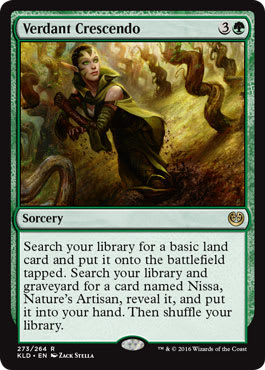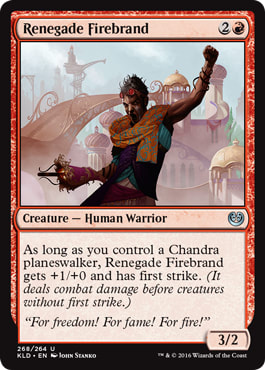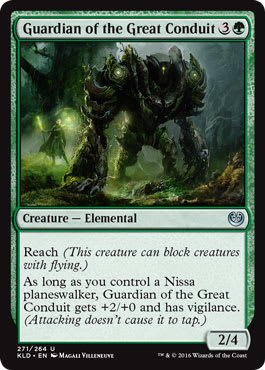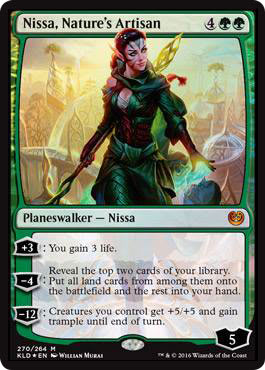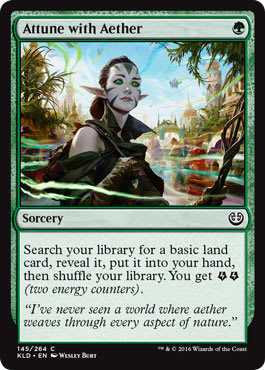Perhaps unsurprisingly, however, acclaim for the product line has not been universal. While no Magic release is bulletproof and immune to constructive criticism, I do feel that some of the objections to the Planeswalker Decks to be a bit wide of the mark. Conveniently, many of these floating around the Magic opinionspace are well-summarized within a recent review of the products from Tolarian Community College, which at time of writing has nearly 75,000 views.
Now at the outset, let me be clear that I have tremendous respect for The Professor and other content creators like him, and while I may have a difference of opinion with some of his observations and conclusions, that’s all they are — a respectful difference of opinion. You, the reader, will have some of your own, and I’d certainly encourage you to share your perspective in the comments. What we, the buying public, think of these Preconstructed products is the largest single component of determining their success or failure. I never like to see a product line die, like the Premium Deck Series, Events Decks, or Clash Packs, so it’s worthwhile to dissect them and see what they’re trying to do — and if they’re seen to be doing that effectively.
We’ll start by addressing some of the concerns voiced around the Planeswalker Decks, then conclude by seeing which types of players the Planeswalker Decks are right for — and which ones they’re not.
The Matter of Consistency
In his review of the Planeswalker Decks, The Professor’s first charge is that the decks create an “inconsistent experience” by mainly including one or two copies of most cards.
“One of the things that is critical for a functioning sixty-card deck is consistency . . . If the premise of these decks is for a new player to learn and become familiar with playing Magic, then I feel very strongly that a complete Magic deck should be provided, not an incomplete one.”
The Professor’s definition of consistency is having playsets of most of the deck’s crucial cards, such as you’d expect to find amongst most (non-toolbox) competitive builds. And if the objective is to provide a consistent paying experience, he’s certainly put his finger on what many see as the product’s biggest problem. It’s fair to say that some of this has nothing to do with deck quality, but rather product positioning: a deck containing multiple copies of the marquee Planeswalker and included rares would be difficult to justify at the price point.
But beyond that narrow restriction, it’s clear that card diversity is a design choice, just as it was with the preceding Intro Packs. From a competitive perspective, card diversity is a very undesirable quality (again, with the caveat that we’re not talking about toolbox decks). When victory is your focus, you want your deck to offer you the best chance of that, and being able to rely on the appearance of your best and most powerful cards is vital.
But are there any instances where card diversity might be a feature, rather than a bug?
To answer that, we actually need to shift perspective for a moment and consider another staple of Wizards’ Preconstructed product line: the Duel Deck. Duel Decks, which actually predate the Intro Pack (they kicked off in 2007 with Elves vs Goblins), are a different product for a different Magic experience. In those constructions, card diversity is very high. The focus isn’t on consistency, but rather the experience of playing the game. When you have a lot of different cards in a deck, you can have wildly different experiences from game to game, depending upon which cards you happen to draw.
In last year’s Kiora Duel Deck, for instance, you might play one game full of tempo plays and bounces for your opponent with cards like Man-o'-War and Whelming Wave, freeing up the red zone for smaller creatures like Netcaster Spider or Surrakar Banisher. Then next game might see you build up a fatty out of Lorescale Coatl and — yes — a playset of Accumulated Knowledge and your lone Kiora, the Crashing Wave. A third game might see you land an Inkwell Leviathan, then cackle with glee as you go big with a Sealock Monster to turn on the Leviathan’s islandwalk.
Rather than being about one single strategy, with cards selected to optimize around it, this experiential design gives you lots of different related pieces which can come together in different, fun ways each time you play. Like, say, a box of Legos. With Wizards’ increasing attention to how players feel when using their products, such as the focus on letting players “feel like an inventor!” with Kaladesh — there’s certainly a place at the table for this sort of deck-building. It’s not unlike the feeling folks who build Cubes get to enjoy: let me build an awesome environment, and see what comes together each time we play!
Now, turning back to the Planeswalker Decks, that card diversity allows players to explore a wider swath of what Magic has to offer each time they shuffle up the decks. Indeed, this is close to the vision of Magic that Richard Garfield had in designing the game, where he felt players would have a limited pool of cards to choose from, and ran the cards they thought were fun. That sort of discovery is a key element in coming to the game. When I picked up the game, “consistency” wasn’t really on my mind, so much as drawing my Craw Wurms, boosting my life total with Stream of Life, and making my creatures bigger with Castle. And when I got more cards, I was delighted to make a deck that leeched off my opponent with cards like Wanderlust or Psychic Venom.
So ultimately, maybe a little “inconsistency” has a place at the table, too.
Negative EV, and the Subject of Standard
This is a common one applied to many Magic releases. If you’ve never heard the term before, EV stands for “expected value.” From an “MTG finance” perspective, it’s a shorthand for “did you get your money’s worth?” If you buy a box of Kaladesh boosters, then open all the packs . . . what’s the likelihood that you’ll open the same amount you paid for the box in singles?
Naturally, many have also taken to assessing the Planeswalker Decks and Intro Packs through the same lens. If you take the contents of the box and sell them on the secondary market . . . will you at least break even?
As the former owner of a Friendly, Local Game Store this was a concept that was significant in making my store operate, because we had to decide how many packs of product we were going to open to stock our singles case. In a lower-EV set, which didn’t offer many chase cards, we would open a lot less than sets that were packed with cards players would be chasing right away.
But the problem with the financial angle is that it runs into a similar wall as the consistency angle. If you were to walk into your local game store right now and buy a copy of Settlers of Catan, would you then upon arriving at home and opening it, go to eBay and look up how much you could sell off the individual components for? Probably not, right?
Ours is not the cheapest of hobbies, so the idea of EV is certainly relevant to how we approach the game. But I’m not convinced that this is the right lens with which to assess a self-contained deck aimed at novice and casual players. Those aren’t markets that are buying for value, but rather buying for entertainment. Put another way, if you’re even asking about EV in the first place, you’re probably not the intended demographic for this type of product.
With regards to formats, one of The Professor’s strikes against the Planeswalker Decks (which he graded FAIL to, by the way), involves the player’s assumed trajectory as well.
“[The decks are] predominantly commons, some uncommons, a couple rares, almost everything being of little to no financial value . . . And nearly none of this — almost none of this — applicable toward building toward Standard.”
At my FLGS, I’m proud to say that I taught a lot of players how to play the game. Folks from all walks of life learned the joy of turning pieces of cardboard sideways, and a new hobby kindled in their lives. And for all those people, most would return here and there to buy a few boosters, singles, or supplies. Some would come and play in our casual-focused events. And far fewer still ever made the jump to playing competitively. It’s true — Magic is a game played on kitchen tables, with a smaller number of players coming out for organized play.
While having a product that on-roads players to competitive play seems like a good idea, Wizards tried that with the Event Deck . . . since discontinued. While there were some concerns with that product line, the biggest issue was probably that for the price, you just couldn’t make a deck that would consistently perform even at a Friday Night Magic. I tested that theory myself by piloting Conquering Hordes, the Event Deck from Khans of Tarkir, at the store’s FNM — with predictably disappointing results.
It would be great to have intro-level decks that happen to be Standard-applicable, if not in its cards then at least in its philosophies, but Magic is a game of discovery. That’s another upside to card diversity. If players discover they value consistency, then they’re immediately presented the opportunity for another lesson- card assessment and deck-building.
The Planeswalkers Themselves
The final point we’ll hit today is in the Planeswalker cards themselves, Chandra, Pyrogenius and Nissa, Nature's Artisan. Here The Professor is particularly blunt.
“[The Planeswalkers] are not only unplayable anywhere else, but they’re designed to be unplayable everywhere else.” They are “intentionally designed to be awful.”
It’s certainly true that they’re not designed to be at the power level of your regular-set Planeswalkers, but this seems to be a case of damned-if-you-do, damned-if-you-don’t. If you make them “good,” then competitive players may feel pressure to buy them. Players would rightfully decry them as a “cash grab,” and that Wizards was compelling them to buy multiples to get the card they wanted. And with a much lower price point than the Commander decks, we might not see the higher prices that new-card playables like Shardless Agent and True-Name Nemesis commanded upon release, but they’d certainly reflect the cumbersome nature of acquisition (being forced to buy a deck just for a single card).
Planeswalkers are the most complicated cards in all of Magic, and I’ve maintained uncertainty about their suitability for an entry-level product in a game that’s already daunting to learn for the uninitiated. But if you’re going to have them, the Planeswalker Decks seem to do a fine job in producing simple, straightforward ‘walkers who have basic, on-color effects. From a competitive angle they may be “awful,” but as with EV this might be an issue of expectations and target audiences. And by lessening up the expected power level of a Planeswalker, it does open up some additional design space that may appeal to a more casual crowd — especially the members of that crowd that want to enjoy that type of card without spending a lot of money on it.
So ultimately, the value of the Planeswalker Deck should be assessed not just in purely financial terms, or from a competitive perspective, but rather should take into account the impressions and experiences of the segment it’s more aimed toward. Who should buy Planeswalker Decks?
Competitive Players: Probably not. You should that money for singles or entry fees.
Limited Players: While getting two-thirds of a draft pool is nice, you can get three-thirds of a draft pool — and draft — by entering one.
MTG Finance: The Professor rightly calls out that the inflated prices of the individual new singles in the decks is a result of scarcity rather than demand. Besides, you probably used that money to snap up playsets of Smuggler's Copter, right?
New Players: Sure! A Preconstructed deck that showcases a variety of cards from the latest set will give you a great sample of all the different types of things going on in Kaladesh, and a good cross-section on the different ways to play the game. Even if you and a friend buy nothing more than a single deck each, you’ll have hours of fun in store.
Preconstructed-Obsessed Armchair Magic Historians: SLAM DUNK!
So as stated before, I’d enjoy hearing your opinions on the new Planeswalker Decks, good or bad! Wizards has been trying for twenty-plus years to find the right point of entry into their game, and Planeswalker Decks might not ultimately be the “final form.” How would you improve it, or do it differently?














